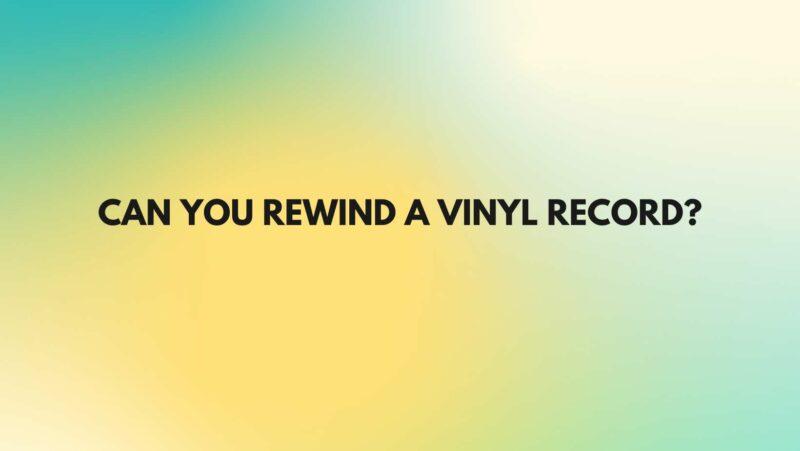Vinyl records have made a remarkable resurgence in recent years, captivating music enthusiasts with their analog charm and unique auditory experience. However, there exists a pervasive question among vinyl collectors and newcomers alike: Can you rewind a vinyl record? In this comprehensive guide, we will delve into the concept of rewinding a vinyl record, the mechanics of vinyl playback, and the reasons why this practice is not applicable in the same way as rewinding a cassette or VHS tape.
Section 1: Understanding the Mechanics of Vinyl Playback
To grasp the concept of rewinding a vinyl record, it is crucial to comprehend the mechanics of vinyl playback. Vinyl records are physical analog media that contain grooves encoding audio information. A stylus (needle) tracks these grooves, translating the vibrations into audible sound. Unlike digital media, such as CDs or streaming, vinyl records rely on continuous analog playback, making the idea of rewinding a record a unique challenge.
Section 2: The Impossibility of Rewinding a Vinyl Record
The act of rewinding implies reversing the playback direction of a recording. While this concept is readily applicable to digital media like tapes or DVDs, it is fundamentally incompatible with vinyl records. Here’s why:
- Continuous Groove: Vinyl records are designed with a continuous, spiraling groove that spirals from the outer edge to the center. This groove represents a single, uninterrupted audio track. Unlike tapes or CDs, there is no separation between songs, making it impossible to rewind to a specific point within a song.
- Analog Playback: Vinyl playback relies on a stylus tracking the groove in one direction only. Unlike digital media that can be easily rewound, a stylus on a turntable cannot reverse its path and navigate back through the groove.
- Physical Limitations: Attempting to physically reverse a vinyl record’s rotation would cause significant damage to both the record and the turntable’s stylus and mechanics. It is not feasible to rewind a vinyl record without causing irreparable harm.
Section 3: Accessing Specific Parts of a Vinyl Record
While you cannot rewind a vinyl record in the traditional sense, there are ways to access specific parts of a record:
- Cueing and Skipping: Turntables are equipped with tonearms that can be manually raised and placed at the beginning of a desired track. By gently lowering the stylus at the desired starting point, you can skip to specific tracks on the record.
- Digital Vinyl Systems (DVS): Some DJs and music enthusiasts use Digital Vinyl Systems, which combine traditional vinyl records with digital technology. DVS systems allow for precise control over playback, including the ability to skip to specific parts of a track.
Section 4: Conclusion
While the idea of rewinding a vinyl record may seem appealing, the analog nature of vinyl playback makes it an impossible feat. Vinyl records are meant to be played in a continuous, forward direction, with each groove representing a single, uninterrupted audio track. While you cannot rewind a vinyl record in the conventional sense, you can access specific parts of the record by manually cueing and skipping. Embracing the unique characteristics of vinyl playback and understanding its limitations will enhance your appreciation of this timeless medium.


